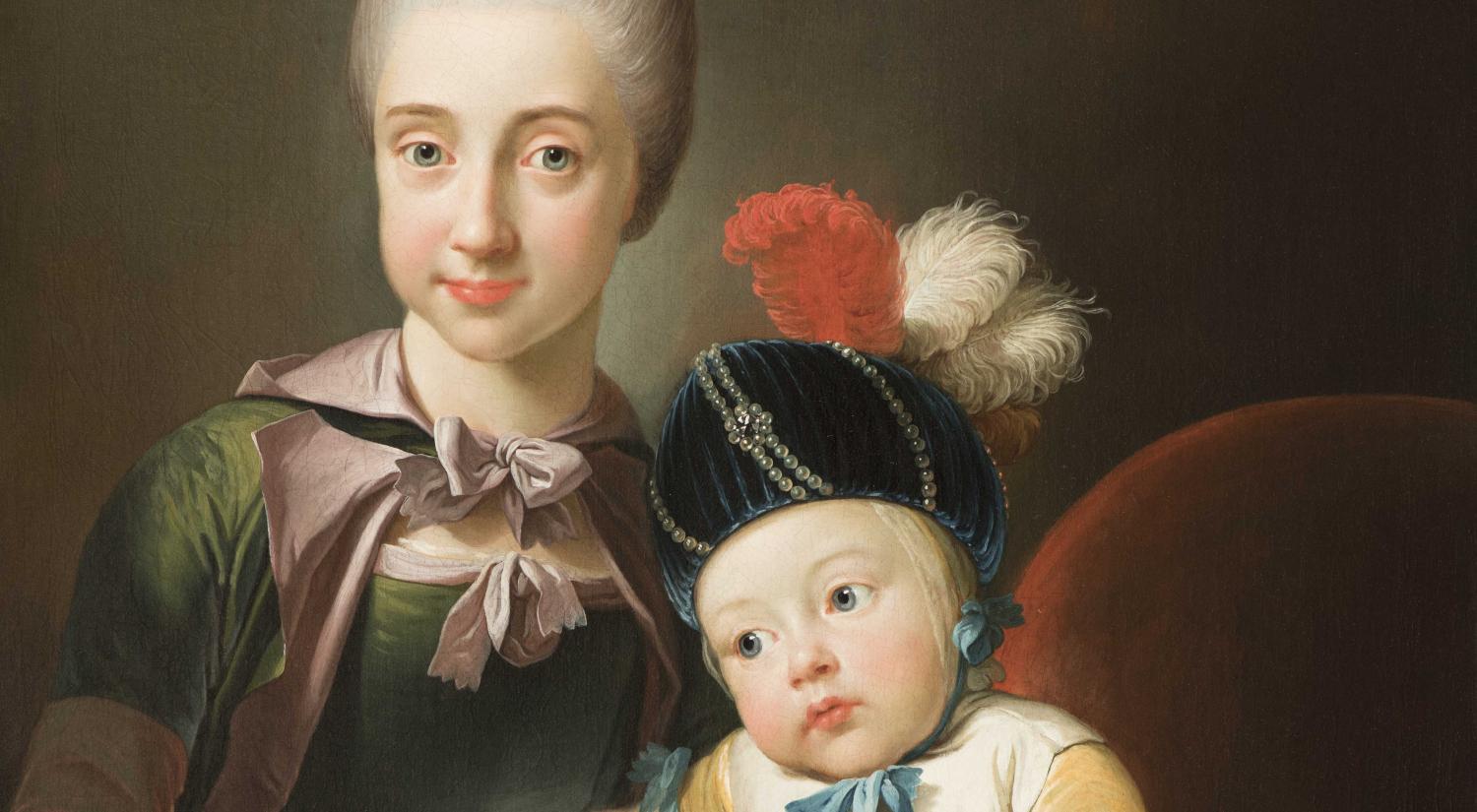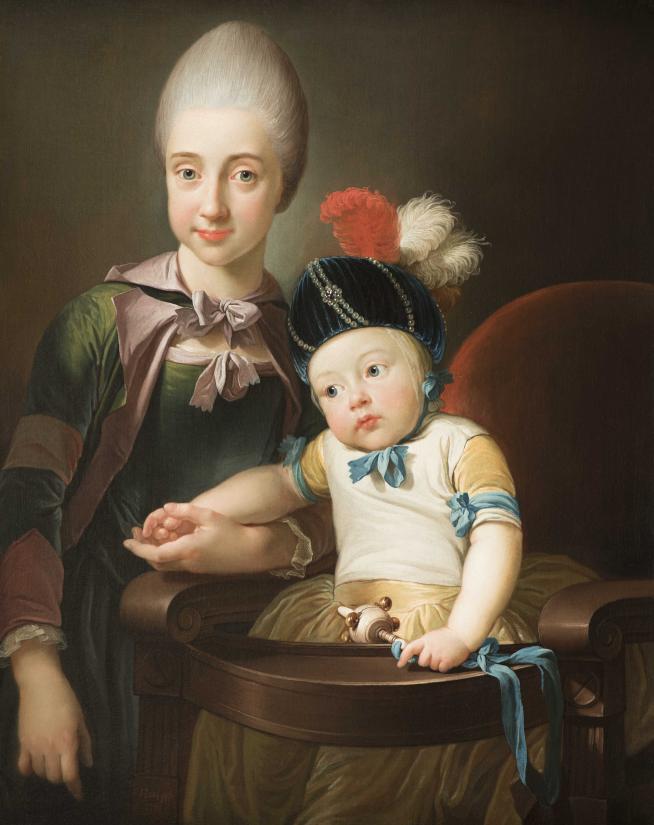Et barn med en ung pige shows a child from the upper echelons of society and, probably, the child’s nanny. Neither person has been identified, but the toddler’s expensive clothes and the pearls and ostrich feathers in the ‘pudding’ safety hat have led some scholars to speculate that it might be a royal child. In that case, the date of the painting would point to the later King Frederik VI, who was born in 1768. It might also be a child whose father is a knight of the Order of the Elephant, as the colours and the ostrich feathers match the habit of the order.
Greater freedom for children
Juel’s portraits of children stood out because he depicted them as children rather than as miniature adults, as was the tradition at the time. Jean-Jacques Rousseau was an important inspiration to many educators and philosophers who transformed the view of parenting and childhood during the 18th century. Instead of being disciplined and chastised, children should be free to experience the world on their own terms. Juel’s portraits of children were informed by this shift in the view of parenting.
The boy in the picture is seated in a high chair, holding an ivory rattle. He is wearing a ‘pudding’ on his head – a padded safety hat that protected toddlers from head injuries if they fell. Thus, the hat suggests that he is allowed to go exploring on his own. The nanny looks at us with confidence and reassurance, perhaps as a reference to the loving care that was mandated in childcare at the time. They lightly hold each other’s hands in a sign of trust. With this painting, Juel combines current educational trends with a charming portrayal of a toddler and a young woman.
Flattering but realistic
The painting is an early piece in Jens Juel’s oeuvre. Later in his career, he painted children’s portraits that are now recognized as milestones in Danish art history. In 1780, Juel was appointed a Court portrait artist and thus portrayed many members of the royal family. Presumably, one of the reasons he was so popular is that while that his portraits were flattering, they also had a strong realistic quality. The nanny in this painting is a good example. Her slightly swollen cheek, which Juel chose to include in his painting, may be caused by a toothache.
About Jens Juel
Jens Juel (1745–1802) was born in the village of Balslev on the Danish island of Funen (Fyn). Shortly after his confirmation, his parents sent him to Hamburg to apprentice as a painter. After completing his apprenticeship, he attended the Royal Danish Academy of Fine Arts, and in 1772, he set out on an eight-year long Grand Tour with stays in Rome, Paris and Geneva, among other places. Juel was widely recognized as Denmark’s leading portrait artist and painted many distinguished persons. In 1786, he became a professor at the Royal Danish Academy of Fine Arts, which he became the director of in 1795.




